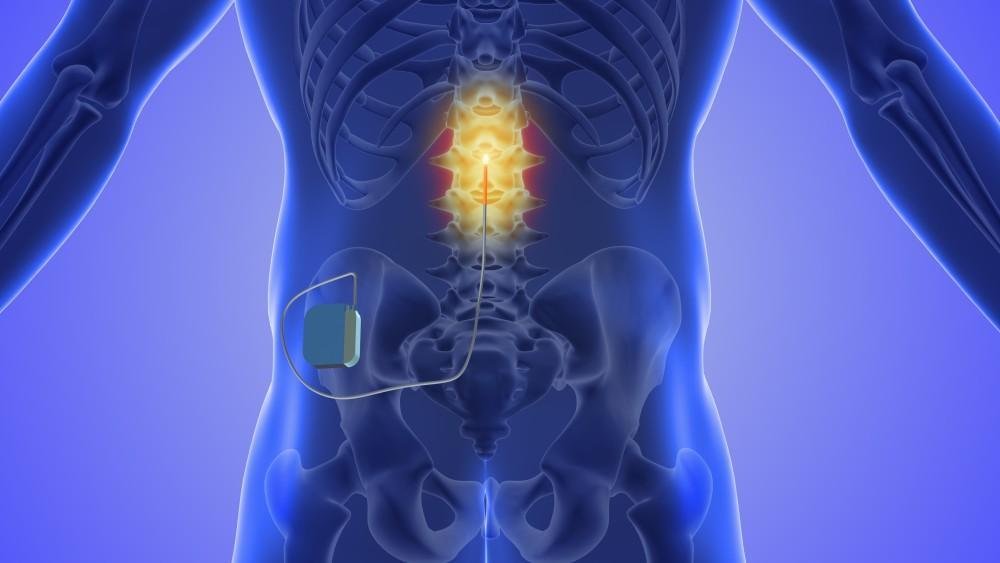Chronic pain can take over your life—physically, emotionally, and mentally. Whether caused by a spinal condition, nerve damage, or failed surgery, long-term pain can make even the simplest daily tasks feel overwhelming. But there’s hope beyond medication and surgery. One groundbreaking technique, Spinal Cord Stimulation (SCS), is changing lives and offering real relief. At Neurology and Pain Management Clinic (NPMC) in Delhi, Dr. Gautam Arora, MBBS, MD, DM, provides advanced spinal cord stimulation therapy for patients who have tried other treatments without success.
This guide will help you understand what spinal cord stimulation is, how it works, who it’s for, and why it may be the solution you’ve been searching for.
What Is Spinal Cord Stimulation?
Spinal Cord Stimulation (SCS) is a minimally invasive procedure that uses a small device to deliver mild electrical impulses to the spinal cord. These impulses interrupt pain signals before they reach the brain, effectively masking the sensation of pain.
The result? A significant reduction in chronic pain, without heavy reliance on medications or invasive surgeries.
The therapy is FDA-approved and has been safely used for over 50 years. However, today’s devices are more advanced, customizable, and offer improved comfort and control for patients.
How Does Spinal Cord Stimulation Work?
The spinal cord stimulator consists of two main parts:
Leads (electrodes): Placed in the epidural space near the spinal cord
Pulse generator (battery): Implanted under the skin, usually near the lower back or abdomen
The stimulator sends electrical pulses through the leads to the spinal cord. These pulses modify pain signals, so your brain doesn’t perceive them as painful. Most patients describe the sensation as a mild tingling or soothing vibration instead of sharp, burning pain.
Many devices today even allow personalised programming, giving patients the ability to adjust stimulation based on activity levels or pain severity using a remote control or smartphone app.
Who Can Benefit from Spinal Cord Stimulation?
Spinal Cord Stimulation is ideal for individuals suffering from chronic pain that hasn’t responded to other treatments. Some of the most common conditions treated with SCS include:
Failed Back Surgery Syndrome (FBSS)
Complex Regional Pain Syndrome (CRPS)
Chronic leg or back pain (radiculopathy)
Peripheral neuropathy
Post-surgical nerve damage
Spinal stenosis
Arachnoiditis
If you’ve undergone multiple therapies—including medication, injections, or surgery—without long-term relief, spinal cord stimulation may be a powerful next step.
Advantages of Spinal Cord Stimulation
Spinal cord stimulation offers several key benefits over traditional pain treatments:
1. Minimally Invasive
Unlike major surgeries, SCS is done through a small incision. The leads are placed using fluoroscopic guidance, and the recovery time is typically short.
2. Reversible and Adjustable
If you don’t experience significant relief, the device can be turned off or removed. Plus, the therapy is adjustable—you can modify the intensity or pattern to suit your comfort.
3. Reduced Need for Pain Medications
Patients often reduce or eliminate the need for opioids and other painkillers, minimising the risk of addiction and side effects.
4. Improved Quality of Life
Patients often report better sleep, mood, and physical functioning after starting SCS therapy. It can help you reclaim your life from chronic pain.
The SCS Trial: Test Before You Commit
One of the most empowering aspects of spinal cord stimulation is the trial phase. Before the permanent device is implanted, patients undergo a temporary trial to see how well the therapy works for them.
What to Expect During the Trial:
A small lead is inserted into the epidural space under local anaesthesia.
It’s connected to an external stimulator.
You wear the device for about 5–7 days and monitor your pain levels.
If you experience 50% or more pain relief, you may qualify for the permanent implant.
This “test drive” ensures that only patients who respond well to the therapy go forward with the procedure.
The Permanent Implant Procedure
If the trial is successful, the next step is the permanent implant. This is usually done on an outpatient basis and takes about 1–2 hours.
What happens:
Leads are implanted through a small incision.
The pulse generator is placed under the skin in the lower back or buttock area.
The device is then programmed and fine-tuned based on your feedback.
You’ll be given a remote control to turn the device on or off and adjust the settings as needed.
Recovery and Follow-Up Care
After the procedure:
Most patients return to light activities within a few days.
Avoid strenuous movement and heavy lifting for a few weeks.
Dr. Gautam Arora will schedule regular follow-ups to monitor the device, pain levels, and make adjustments if needed.
With proper care, the battery in modern SCS devices can last up to 10 years or more, depending on usage and model.
Real-Life Success Stories
At NPMC, many patients who struggled with unrelenting pain for years have found life-changing relief with spinal cord stimulation. Whether it’s walking again without pain, returning to work, or simply sleeping through the night, the results can be profound.
Patients often report a 70% or more reduction in pain, improved mobility, and a renewed sense of control over their lives.
Are There Any Risks?
As with any procedure, there are some risks, though complications are rare and manageable. These include:
Infection at the implant site
Lead migration (movement of the wires)
Device malfunction
Allergic reaction to materials
Dr. Gautam Arora takes every precaution to minimise these risks and ensure patient safety. Thorough evaluation, sterile techniques, and regular monitoring help keep outcomes positive.
Is Spinal Cord Stimulation Right for You?
You might be a good candidate if:
You have chronic, neuropathic pain that hasn’t responded to conservative treatments
Imaging and diagnosis support your condition
You don’t have untreated depression or serious mental health issues
You are motivated to reduce medication and improve function
At Neurology and Pain Management Clinic (NPMC), we conduct a comprehensive evaluation—looking at medical history, diagnostics, and lifestyle factors—to decide if SCS is the best option for you.
Conclusion: A New Chapter Without Pain
Living with chronic pain doesn’t have to be your reality. With spinal cord stimulation, you have the opportunity to experience lasting relief, better mobility, and improved quality of life, without constant medications or major surgeries.
If you’ve tried everything and are still in pain, it’s time to explore what modern neurology has to offer. Schedule a consultation with Dr. Gautam Arora at NPMC and take the first step toward saying goodbye to chronic pain—for good.


































































































































































































































































































































































































































































































































































































































































